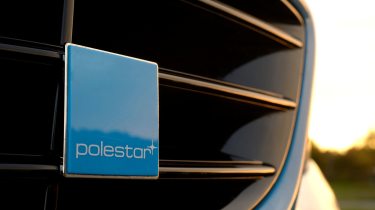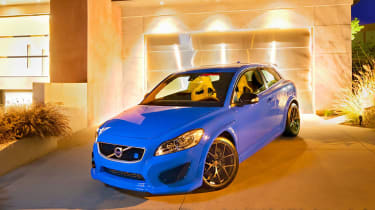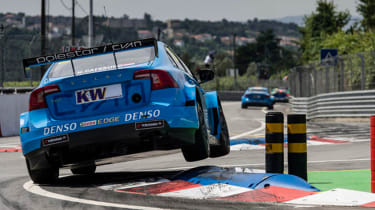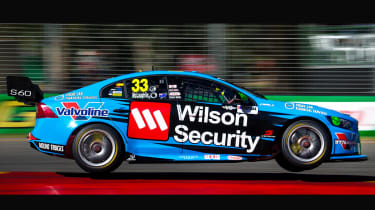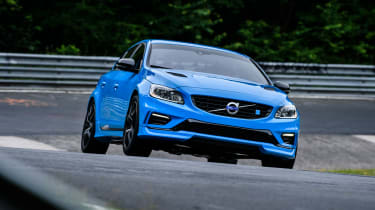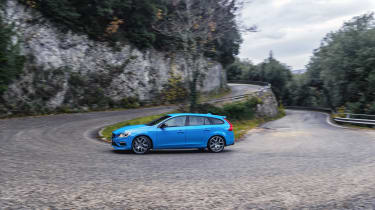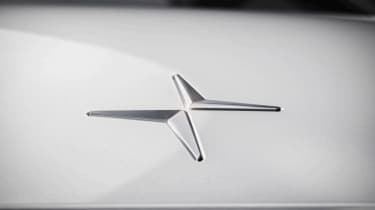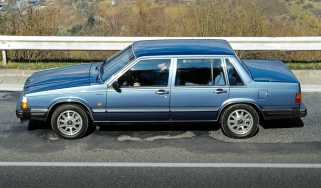What is Polestar? History and future of Volvo’s performance brand
Polestar has a history of building fast Volvos for road and track but it’s heading in to uncharted territory…
Polestar and its striking ‘Rebel Blue’ calling card gained their first real international recognition in 2009. The Volvo C30 was already a very good-looking little hatchback, but it lacked the panache or performance its design so richly deserved. Having won the 2009 Swedish Touring Car Championship in a C30, Polestar decided to produce a road car based on the racing car.
The result was the outlandish C30 Polestar Concept. With 405bhp, a 0-60mph time of 4.6 seconds and an all wheel-drive system, the car delivered its brutal soundtrack via a straight through exhaust and caught the eye of every motoring enthusiast in the land.
> Volvo C30 Polestar Concept review
The Polestar Concept really did look like a touring car for the road and with the power and sophisticated chassis to match; it drove like one as well. Unfortunately it was merely a marketing exercise and, more importantly, a demonstration by Polestar of what it could do to a C30 given the chance. What it certainly did do was get us all talking.
Prior to the C30 Polestar Concept’s arrival, Polestar was a relative unknown, but the car had us all reminiscing about 850Rs that competed in the BTCC and we longed for Polestar to once again turn Volvo into a genuine performance brand. Of course, Polestar had a history that predated this dramatic emergence on the road car scene and its CV is impressive to say the least.
The history of Polestar
The company that was to become Polestar was started in 1996 under the banner of Flash Engineering by Swedish Touring Car champion Jan ‘Flash’ Nilsson. Having had considerable success with the touring car outfit in Europe, with over 100 wins between 1996 and 2005 using Volvos as a staple base, Jan stepped aside in 2005, selling the company to Christian Dahl. Dahl renamed it Polestar Racing.
Even with its constant connection to Volvo, Polestar remained a separate company made up of two distinct divisions - the Polestar Racing department and the Polestar performance road car division. Change was set in motion when Geely bought Volvo in 2010 and in 2015 Volvo stepped in to buy the Polestar road car division from Christian Dahl, who promptly renamed the Racing team again - this time to Cyan Racing.
After a few years producing tuned versions of Volvo road cars, Polestar is today being repositioned by Geely as a separate performance brand. The plan is for Polestar to fashion its own range of hot electric cars but more of that later.
Polestar in motorsport
Polstar’s racing arm has enjoyed enormous success over the years with touring car exploits under its various guises. It once again jumped to international fame when in 2014 it announced it would be competing in the V8 Supercar championship in Australia. The ‘Rebel Blue’ paint scheme returned once more and provided some of the best entertainment seen in the sport.
If you haven’t seen the last the lap battle between Jamie Whincup in his red Bull Holden and Scott McLaughlin in his Volvo Polestar, watch it now. It may just be one of the best final lap fights ever.
Unfortunately with Polestar having failed to win the championship between 2014 and 2016, the plug was pulled on the V8 Supercar campaign so that the firm could focus on other championships instead.
Cyan Racing, with the backing of Volvo and Polestar, decided to enter the WTCC in 2016. Having had a tough first season with the development of the car, the team returned in 2017, offering a much stronger package.
Polestar's road cars
Polestar Performance is the Geely-owned Volvo subsidiary company that focuses on building limited edition performance Volvos having graduated from the stunning the C30 Polstar Concept.
Throughout its time as a road car manufacturer and tuner, Polestar has designed and built seven different road cars, five of which have gone into production - albeit in limited numbers and in selected markets in some cases.
The first production car was the S60 Polestar back in 2013 and it was launched as a limited edition pilot project purely for the Australian market. This car set the tone for how all future Polestar cars would be. It featured a 3.0-litre turbocharged six cylinder that sent 350bhp to all four wheels via an automatic gearbox.
Despite a manual gearbox being used on the original S60 Polestar concept and the C30 concept, no production Polestar has yet been offered with the option or fitment of a manual gearbox. All models since the initial S60 have been uprated variants of the S60 and V60 based on the latest platforms from Volvo.
The new V60 Polestar is set to be the first Polestar Volvo to go into full production to be sold globally. There are currently only 125 examples coming to the UK, but despite having a price of £49,775 that makes it £9,000 more than an Audi S4 Avant, we have no doubt that all will be sold. With a 3.0 litre straight six producing 345bhp and 0-60 time of 5secs, it sounds an exciting package.
The fact that it breaks away from the traditional German market should be enough to sway you but if not its chisel jawed looks and infamous ‘Rebel Blue’ paint being one of four options make it a real contender. This could well be the return of the legendary 850R that in estate form tore up the BTCC. However, the one car we really want them to make is still just a concept at the moment.
With Alfa Romeo taking the fight to BMW, Audi and Mercedes with its Quadrifoglio in regards for top honours when it comes to bonkers saloons, it would be great to see Volvo and Polestar have a shot at the crown as well. Frustratingly it has the car that could do it. The Volvo S60 Polestar concept came along in a stunning aggressive, racing car style body that was intimidating even to look at.
With a 3.0-litre six-cylinder straight six that was tuned up to 500bhp propelling from standstill to 60 in juts 3.9 seconds, it really could be a genuine contender in that market. The top speed of 190mph may also have sent shivers down the spines of the Germans. But unfortunately it remains just a concept for now.
But for those who just can’t wait for a full-blown Polestar or can’t get their hands on one due to the limited numbers, Volvo offers a Polestar Performance package as an option on each new car. This typically includes an uprated exhaust and air filter, performance springs and dampers and new wheels and tyres. If you failed to select this option when purchasing your new Volvo, the packs are also available from Volvo dealers as aftermarket kits.
The future of Polestar
Despite a history of Touring cars and road cars based on Volvos, Polestar’s future appears to rest down a rather different path. Under the guidance of parent company Geely, the firm are to breakaway from Volvo to create an entirely new performance car company.
Despite detaching from Volvo, Polestar will still be involved with high Performance Volvos as well their own bespoke cars. The big change is that electrification will play a huge part in all new cars produced as Polestar looks to become an electric performance brand.
This news came shortly after Geely, also acquired a majority stake in Lotus. This is good news for Polestar as it looks to produce performance cars because Lotus possesses one of the best chassis teams there is and has a history of doing development work for other companies. It is unsure what platform Polestar will use to produce its new cars or what (if any) Lotus’ involvement will be but the future looks bright for Polestar as a fast car company and it appears that the firm’s already impressive CV will continue to grow.
